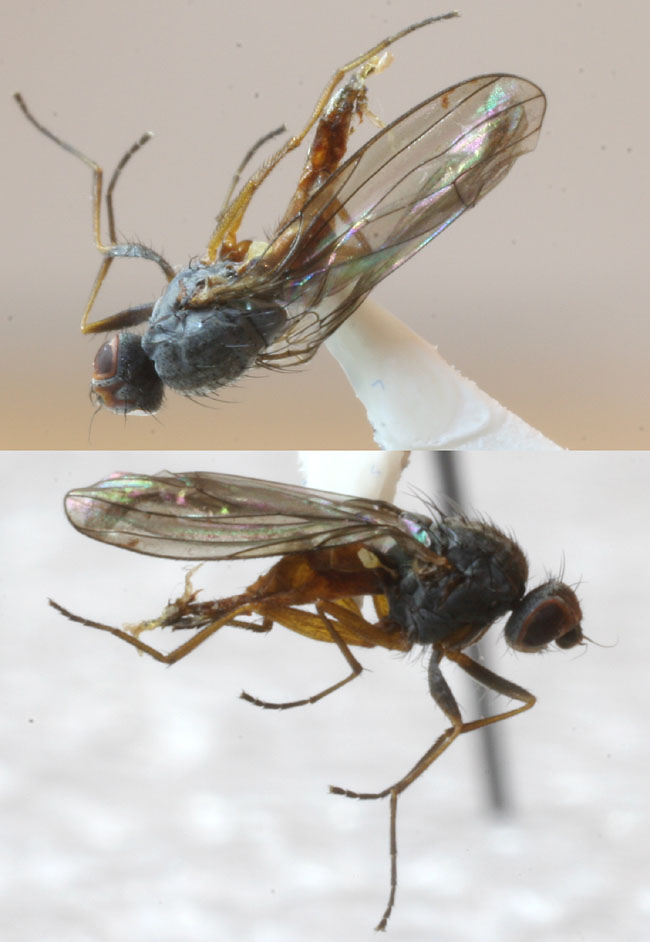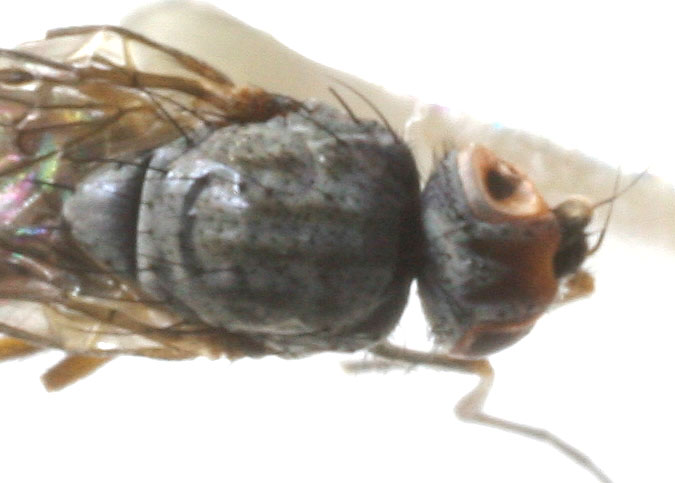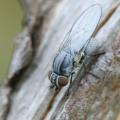Diptera.info :: Identification queries :: Diptera (adults)
Who is here? 1 guest(s)
|
Spring Heleomyzidae
|
|
| Nikita Vikhrev |
Posted on 21-03-2006 21:38
|
|
Member Location: Moscow, Russia Posts: 9399 Joined: 24.05.05 |
Sochi, Black Sea, on/near horse dung in forest, 6mm, one of a kind. On t2 1 ventral apical spine, there is seta under yey, 0+3 dc, subcostal cell short? Tephrochlamys? Size 6mm - T. rufiventris? But I can see between dc only 4 row of hair - T. laeta? Help, please! Nikita Vikhrev attached the following image:  [78.7Kb] Nikita Vikhrev - Zool Museum of Moscow University |
|
|
|
| Andrzej |
Posted on 22-03-2006 09:35
|
|
Member Location: Poland Posts: 2396 Joined: 05.01.06 |
Dear Nikita !. Its a pity that is a female only but a representative of genus Orbellia R.-D. Maybe on second tibia two preapicals !???   |
|
|
|
| Andrzej |
Posted on 22-03-2006 10:01
|
|
Member Location: Poland Posts: 2396 Joined: 05.01.06 |
SORRY FOR MISTAKE ! a second idea is to check the bristles on the peristomal setae (genal area). If one central genal bristle is present that is a second genus - Heteromyza Fallen . Oh sorry, I read carefully your description now so please forget my first determination !  It is Heteromyza, probably H. oculata Fll. It is Heteromyza, probably H. oculata Fll.The subcostal cell is typically for two Holarctic genera only: Heteromyza from tribe Heteromyzini and Orbellia from Orbellini Gorodkov. Pozdravljaju (Best regards !) Andrzej |
|
|
|
| Nikita Vikhrev |
Posted on 22-03-2006 16:35
|
|
Member Location: Moscow, Russia Posts: 9399 Joined: 24.05.05 |
Thank you Andrzej. I need couple hours to think over your information, than I'll write again. Nikita Nikita Vikhrev - Zool Museum of Moscow University |
|
|
|
| Nikita Vikhrev |
Posted on 22-03-2006 18:34
|
|
Member Location: Moscow, Russia Posts: 9399 Joined: 24.05.05 |
Hello Andrzej! Heteromyza. 1. Work on mistakes. 1.1. "on t2 1 ventral apical spine, there is seta under eye" - so, this was correct. 1.2. "0+3 dc" - so cerrect is 1+3 1.3. " subcostal cell short" - subcostal cell is longer than ta. It is clear, but I thoght that ta = mm, but realy mm = tp, but ta = rm. 2. Which Heteromyza? In my key (by Gorodkov in Diptera of Eur Russia): H. atricornis (and two other species) - dc before suturum developed normaly. H. oculata - dc before suturum - between normal and hair. It seems to me that rather H. atricornis? Alas, I have no material to compare with (yet). Nikita Nikita Vikhrev attached the following image:  [49.22Kb] Nikita Vikhrev - Zool Museum of Moscow University |
|
|
|
| Andrzej |
Posted on 23-03-2006 14:36
|
|
Member Location: Poland Posts: 2396 Joined: 05.01.06 |
Dear Nikita !, If the vibrissa is in the same level as the bottom eye margin than the species is H. atricornis, if not (= distinctly below the should be H. rotundicornis. Please remember that The key from Kiryl Gorodkov was made rather on the males characters than on both sexes. That's all I can tell you !  Andrzej |
|
|
|
| Nikita Vikhrev |
Posted on 23-03-2006 16:28
|
|
Member Location: Moscow, Russia Posts: 9399 Joined: 24.05.05 |
1. Thank you Andrzej. 2. Gorodkov's key in teza about presutural dc development is "unisex". So I suppose that you regard this dc about normal, that is why you excluded H. oculata. 3. Vibrissa is higher than eye margin, distribution and size also more suitable for H. atricornis. Nikita Nikita Vikhrev - Zool Museum of Moscow University |
|
|
|
| Jump to Forum: |















